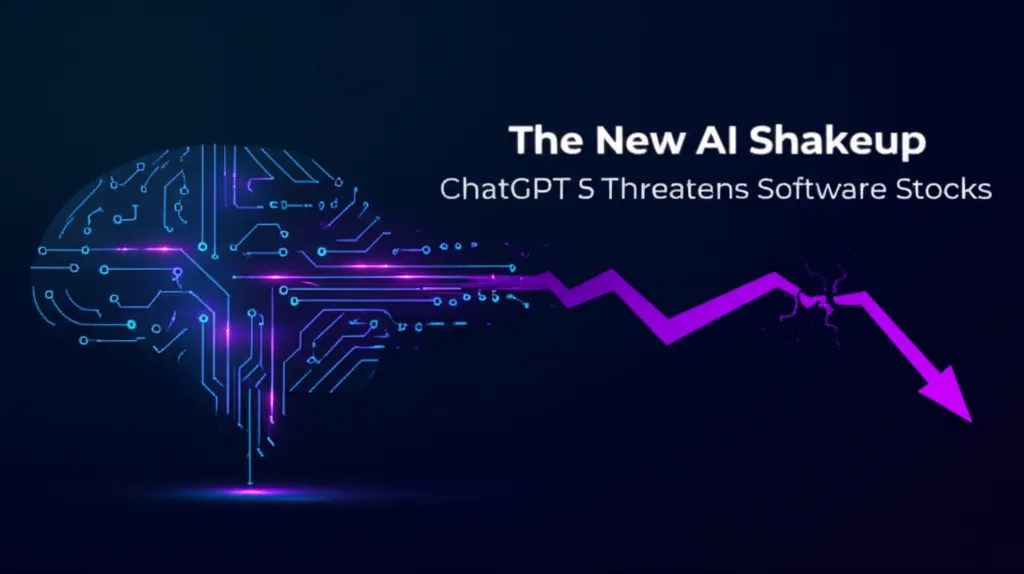Developer Offer
Try ImaginePro API with 50 Free Credits
Build and ship AI-powered visuals with Midjourney, Flux, and more — free credits refresh every month.
ChatGPT Update Sparks Debate On AI Hype And Limits
The recent update to ChatGPT, dubbed GPT-5 by many in the community, has ignited a firestorm of discussion, moving beyond typical feature critiques to question the very trajectory of AI development. The sentiment suggests a potential turning point, where the soaring hype around Large Language Models (LLMs) is finally meeting the hard reality of their current limitations.
A Turning Point for AI Hype
The initial reaction from many technologists points to a significant disillusionment. The update is being framed not as a leap forward, but as a moment that clearly exposes the ceiling of current LLM capabilities. A prevailing view is that the era of exponential improvement may be over.
"The limitations of what was believed to be by many as a path to AGI/ASI are becoming more clearly apparent... what we're seeing now is not exponential improvement. This is not going to rewrite and improve itself, or to cure cancer, unify physics or any kind of scientific or technological breakthrough."
This perspective reframes powerful tools like ChatGPT from a stepping stone to Artificial General Intelligence (AGI) to merely a "dispensable quality-of-life improvement" for professionals like coders. The narrative has shifted from one of imminent, world-altering revolution to a more sober assessment of a useful, yet flawed, technology.
Scientific Breakthroughs A Counterpoint
However, this pessimistic view isn't universally shared. A strong counterargument emerged, cautioning against dismissing the power of generative AI entirely. A recent development was highlighted where AI was used to achieve a significant scientific breakthrough.
"Today’s news from BBC, 6 hours ago. ‘AI designs antibiotics for gonorrhoea and MRSA superbugs’... The MIT team have gone one step further by using generative AI to design antibiotics in the first place."
This example, detailed in a BBC news report, serves as a powerful reminder that while one application of AI may be stalling, the underlying technology is still enabling remarkable progress in other domains.
The Critical Distinction LLMs vs Specialized AI
The debate quickly evolved, drawing a crucial distinction between the broad field of "generative AI" and the specific technology of LLMs that powers ChatGPT. The success in designing antibiotics was achieved with highly specialized AI models, not a general-purpose LLM.
As one commenter clarified after reviewing the MIT research article, the models used were tailored for molecular generation and predate the current generation of LLMs. The technical paper is available in the journal Cell.
This nuance is key: one can celebrate the success of purpose-built AI in science while simultaneously being critical of the AGI promises attached to massive LLMs. The core issue for many isn't that AI is useless, but that the specific vision being sold by OpenAI's leadership may be a form of "snake oil."
User Frustration and Performance Issues
Beyond the philosophical debate, practical user frustrations have boiled over. Many users report that the new ChatGPT is actively worse than previous versions, particularly the model referred to as "o3".
Reports include:
- Increased Hallucinations: Summaries of notes containing completely fabricated information.
- Basic Failures: Generating convincing-looking code and analysis for benchmarks while getting fundamental calculations completely wrong.
- Poor Reliability: The model hangs indefinitely on tasks that older versions handled easily.
This perceived degradation in quality, or "enshittification," is seen by some as a cost-cutting measure, where a slightly worse but cheaper model is rolled out to the masses. The result is an erosion of trust and users actively seeking ways to revert to older, more reliable models.
OpenAIs Strategy and Communication Breakdown
OpenAI's handling of the release has also drawn sharp criticism. The poor communication, which conflated the rollout of a new model with new model-selection heuristics, created widespread confusion. For instance, when a CNN reporter demonstrated the model failing at image-based tasks, it wasn't clear that these tasks weren't even running on the new GPT-5 model.
This has led to speculation about the company's motives. Is this incompetence, which is damaging for a company whose primary business is selling AGI hype to investors? Or is it a calculated, if clumsy, business strategy? Whatever the cause, the botched release has provided ample fuel for skeptics and left many loyal users feeling frustrated and misled.
Compare Plans & Pricing
Find the plan that matches your workload and unlock full access to ImaginePro.
| Plan | Price | Highlights |
|---|---|---|
| Standard | $8 / month |
|
| Premium | $20 / month |
|
Need custom terms? Talk to us to tailor credits, rate limits, or deployment options.
View All Pricing Details

